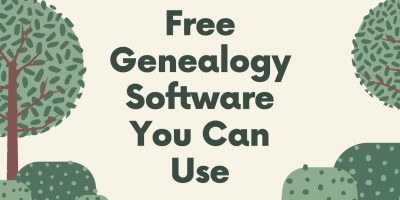Free Downloadable Attendance Tracker Templates
Explore some of the most effective approaches to tracking employee attendance with templates that offer accurate and customizable solutions and timesaving.

The concept of using intent data for business development is not a novel one.
Since intent falls in the middle of the strategy-to-execution spectrum, it can have benefits for more than just marketing or sales. Factoring in the interests, needs, and behaviors of potential customers allows businesses to tailor not only their outreach but their product offerings as well.
Of course, the most relatable case can be made for time efficiency and cost-saving.
By focusing business development efforts on prospects with demonstrated intent, companies can avoid wasting resources on leads less likely to convert.
Hence, even though intent data is shown to aid the everyday job of sales agents, marketing teams, and customer success reps it can also be a powerful tool in the overall business development strategy.
By using intent data, companies can streamline the whole working process by uncovering:
Still, intent data alleviates prospects‘ targeting processes and enables businesses to guide them through the whole journey by offering their product or service as a solution to their pain points.
Buyer intent data, or just intent data, is a powerful marketing asset that reveals information on buyers’ online activities, behaviors, and actions that indicate their interest and purchase intention. These are also called digital signals and incorporate anything from searches, ad interactions, and downloads to researching vendors on third-party websites.
Based on how this data is collected, there are three types of intent data:
Once organized, intent data uses the users’ unique digital footprint to predict what they’re likely to do next on their buyer journey. As such, it becomes an invaluable tool for companies to understand their target audience and tailor their strategies to offer the right solution at the right time.
Grasping the effect of intent data on a company’s bottom line requires comprehending what business development is and what a business development strategy involves. To put it simply, business development consists of all the processes, activities, and ideas implemented within an organization to promote its growth and boost its revenue.
Business development tasks, in general, help improve companies while increasing their profitability at the same time. Even though these activities often intertwine with sales activities, they shouldn’t be perceived as the same.
In fact, business development involves sales and marketing activities, business partnership and business expansion initiatives, market and product development, vendor management, and more.
The main difference between business development and sales is that the former isn‘t directly connected to converting leads into customers and closing deals. While the two often overlap, business development representatives are mainly focused on the following:
A business development strategy or a plan should enlist what the organization and its employees should do to achieve its growth objectives:
Business development involves an integrated approach to achieving organizations‘ goals. Therefore, executives regularly collaborate with marketing, sales, and other departments to provide maximum value to the company.
Intent data’s primary goal, as the name suggests, is to reveal prospects’ intent.
Furthermore, organizations and businesses can discover in-market buyers and the products or solutions they are searching for by understanding prospects’ intent.
Business development reps can leverage intent data for business development to streamline their company’s processes. As such, it can be an asset for business developers to help them:
According to Google, the buyer’s journey is no longer linear.
Switching from a funnel to a loop, what Google calls the “messy middle,” set forth the need for companies to adjust their strategies and correctly map the customer journey.
That’s where organizations can integrate intent data for business development since this insight helps them create a detailed picture of how prospects move through the buying process.
Understanding the signals, pain points, and decision-making factors allows businesses to align outreach and content with their needs at every stage. Overall, this proactive approach ensures that a company is present with the correct information when prospects require it most.
As statistics from one Gartner research show, up to 50% of the prospects are searching for information from third-party sources. And often, this individual research means that prospects had already made the purchase even before someone from the sales team contacted them.
Intent data does not only diminish this blind spot but also helps identify the in-market buyers who are ready to buy particular products or services. Thus, marketers can save time and resources by reaching their ideal prospects for their solutions and surfacing new accounts to target.
Intent data can show what your prospects are searching for, the products they are most interested in, and what competitors they are considering. Hence, organizations leveraging intent data to boost their business development strategies.
Especially at companies that offer various products, intent data can highlight what prospects are searching for, so they can customize and personalize the initial pitch more efficiently.
Intent data can show what your prospects are searching for, the products they are most interested in, and what competitors they are considering. Hence, organizations leverage intent data to boost their business development strategies.
Especially at companies that offer various products, intent data can highlight what prospects are searching for, so they can customize and personalize the initial pitch more efficiently.
Seeing how buyer intent data collects and uses consumer information insights raises some privacy concerns. The introduction of data protection laws, like the General Data Protection Regulation (GDPR) in the EU and the California Consumer Privacy Act (CCPA) in the U.S., also imposes regulatory issues.
In recent years, we’ve seen efforts to give consumers more control over their data, which affects how companies collect, store, process, and use personal information. And since intent data can provide insight into individuals’ behaviors, preferences, and interests, the nature of this data sometimes falls under the scope of “personal information.”
Thus, companies, especially those operating internationally, must keep this in mind and comply with the laws and regulations. That usually means implementing clear and transparent data collection policies, obtaining explicit consent from their users and allowing them to withdraw it at any time, or ensuring they purchase intent data from reputable third-party vendors that follow the same regulations.
As for the data, especially the one coming from third parties, another major concern is its quality and accuracy.
Thus, regularly validating, cleaning, and updating the data is crucial, as is relying on multiple source providers.
Digitalization and globalization majorly impact how consumers approach buying nowadays.
The stages of the purchasing journey businesses once followed no longer apply in the “messy middle.” This trend will likely evolve with the next big innovation, creating a need for companies to adapt quickly.
Currently, the future of intent data is leaning towards AI and machine learning since they allow companies to process massive amounts of data much more quickly and accurately. It’s also safe to assume that privacy regulations will expand to protect users, forcing businesses to adapt better data collection and usage policies.
Business development reps and companies will continue using intent data to alleviate and streamline business development processes. By following current and future trends, companies can boost their bottom line by uncovering new leads, finding in-market prospects, and identifying their competitive advantage.
Browse our curated list of vendors to find the best solution for your needs.
Subscribe to our newsletter for the latest trends, expert tips, and workplace insights!
Explore some of the most effective approaches to tracking employee attendance with templates that offer accurate and customizable solutions and timesaving.
Streamline attendance management and boost productivity with these cutting-edge solutions for businesses of all sizes.

Get equipped with insights on selecting the right HR software for startups, including tips for successful implementation.

Explore free genealogy software solutions and their helpful features to discover more about your family roots and ethnicity.
Used by most of the top employee benefits consultants in the US, Shortlister is where you can find, research and select HR and benefits vendors for your clients.
Shortlister helps you reach your ideal prospects. Claim your free account to control your message and receive employer, consultant and health plan leads.